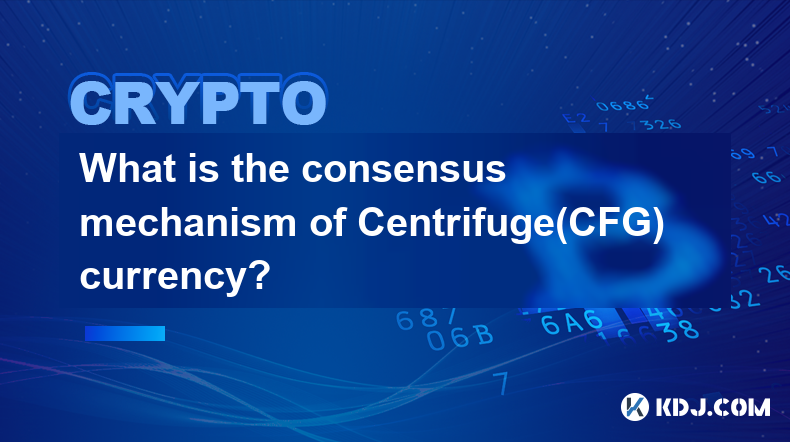-
 Bitcoin
Bitcoin $102,163.2697
6.02% -
 Ethereum
Ethereum $2,150.5881
19.90% -
 Tether USDt
Tether USDt $1.0002
-0.01% -
 XRP
XRP $2.2816
8.03% -
 BNB
BNB $621.9127
3.90% -
 Solana
Solana $160.9056
10.18% -
 USDC
USDC $0.9999
-0.01% -
 Dogecoin
Dogecoin $0.1919
12.84% -
 Cardano
Cardano $0.7428
12.87% -
 TRON
TRON $0.2549
2.81% -
 Sui
Sui $3.9413
20.96% -
 Chainlink
Chainlink $15.6333
15.00% -
 Avalanche
Avalanche $21.5896
11.76% -
 Stellar
Stellar $0.2857
10.70% -
 Shiba Inu
Shiba Inu $0.0...01415
12.36% -
 Bitcoin Cash
Bitcoin Cash $418.6912
17.25% -
 UNUS SED LEO
UNUS SED LEO $8.8588
1.73% -
 Pi
Pi $0.6406
10.47% -
 Hedera
Hedera $0.1918
10.27% -
 Toncoin
Toncoin $3.2151
7.17% -
 Hyperliquid
Hyperliquid $23.1281
10.85% -
 Litecoin
Litecoin $93.2866
5.66% -
 Polkadot
Polkadot $4.3578
11.64% -
 Monero
Monero $297.8483
6.26% -
 Dai
Dai $1.0002
0.00% -
 Bitget Token
Bitget Token $4.4492
5.91% -
 Ethena USDe
Ethena USDe $1.0003
-0.04% -
 Pepe
Pepe $0.0...01078
32.09% -
 Bittensor
Bittensor $417.8303
16.87% -
 Uniswap
Uniswap $5.6674
18.46%
What is the consensus mechanism of Centrifuge(CFG) currency?
Centrifuge (CFG) employs a Proof-of-Stake (PoS) consensus mechanism, leveraging network participants' economic incentives to secure the network and validate transactions energy-efficiently.
Dec 08, 2024 at 05:43 pm

What is the Consensus Mechanism of Centrifuge (CFG) Currency?
Introduction:
Centrifuge (CFG) is a decentralized lending protocol that enables the creation of real-world asset-backed tokens. These tokens represent claims on the underlying assets, which can include invoices, trade receivables, and real estate. The Centrifuge protocol utilizes a unique consensus mechanism known as Proof-of-Stake (PoS) to maintain the integrity and security of the network.
Understanding Proof-of-Stake (PoS) Consensus:
PoS is a blockchain consensus mechanism that relies on the economic incentives of network participants to secure the network. In PoS systems, block validators are chosen based on their stake in the cryptocurrency. Validators with a larger stake have a higher chance of being selected to produce new blocks and receive block rewards.
Benefits of Proof-of-Stake for Centrifuge:
- Security: PoS provides a secure and efficient way to validate transactions and maintain the integrity of the Centrifuge network. Validators are incentivized to act honestly, as malicious behavior can result in the loss of their stake.
- Energy Efficiency: Unlike Proof-of-Work (PoW) systems, PoS does not require intensive computational power to validate blocks. This makes it a more energy-efficient and environmentally friendly consensus mechanism.
Implementation of PoS in Centrifuge:
Centrifuge implements PoS through the following key components:
- Validators: Validators are responsible for proposing and validating new blocks. They are chosen based on their CFG stake and the amount of time they have been actively staking.
- Delegation: CFG holders can delegate their stake to validators to increase their chances of participating in block production and earning rewards. Validators with larger delegations have a higher chance of being selected.
- Rewards: Validators receive block rewards for successfully proposing and validating blocks. Rewards are distributed proportionally to their stake and the contribution they make to the network.
Additional Consensus Mechanisms for Centrifuge:
While PoS is the primary consensus mechanism used by Centrifuge, the protocol also incorporates additional mechanisms to enhance security and resilience:
- Aragon: Centrifuge leverages the Aragon governance framework to enable decentralized decision-making and community involvement in the protocol's development and operations.
- Dispute Resolution: The protocol includes a dispute resolution process to address conflicts between participants or malicious behavior. Disputes are resolved through a decentralized arbitration mechanism.
- Oracles: Centrifuge integrates oracles to provide real-world data and information to the protocol, ensuring the accuracy and transparency of asset-backed tokens.
Conclusion:
Centrifuge utilizes a robust and multi-faceted consensus mechanism based on Proof-of-Stake (PoS) to maintain the security, integrity, and efficiency of its blockchain network. This mechanism, combined with additional governance and dispute resolution mechanisms, empowers the Centrifuge community to participate in and contribute to the protocol's growth and success.
Disclaimer:info@kdj.com
The information provided is not trading advice. kdj.com does not assume any responsibility for any investments made based on the information provided in this article. Cryptocurrencies are highly volatile and it is highly recommended that you invest with caution after thorough research!
If you believe that the content used on this website infringes your copyright, please contact us immediately (info@kdj.com) and we will delete it promptly.
- Ethereum (ETH) Price Surges Past $2,000 as Trump's Trade Deal and Pectra Upgrade Ignite Bullish Momentum
- 2025-05-09 05:25:12
- Cryptocurrency market pushes higher, buoyed by US-UK trade deal
- 2025-05-09 05:25:12
- Binance Coin (BNB) Outperforms the Altcoin Market, Setting New All-Time Highs
- 2025-05-09 05:20:12
- The U.S. legislation that would establish stablecoin regulation failed to take a huge step closer to reality
- 2025-05-09 05:20:12
- Unstaked Quietly Proves Why It May Be the Best Crypto Right Now
- 2025-05-09 05:15:12
- As the Bitcoin Price Drives Toward $150,000, the ripple effect across the altcoin market is already being felt.
- 2025-05-09 05:15:12
Related knowledge

Is Ethereum smart contract call fee high? How to optimize costs?
May 08,2025 at 09:35am
Is Ethereum Smart Contract Call Fee High? How to Optimize Costs? The world of Ethereum smart contracts has revolutionized the way we think about decentralized applications and blockchain technology. However, one of the most frequently discussed topics within this realm is the cost associated with executing smart contract calls. In this article, we will ...

Is Ethereum Layer2 fee low? How to use it cheaper?
May 08,2025 at 03:56am
The question of whether Ethereum Layer 2 solutions offer lower fees and how to use them more economically is a topic of great interest within the cryptocurrency community. Ethereum's Layer 2 solutions have been developed to address the high transaction fees and scalability issues associated with the main Ethereum network. In this article, we will delve ...

How to calculate Ethereum network fee? How to reduce transaction costs?
May 08,2025 at 02:15am
Understanding and managing Ethereum network fees is crucial for anyone involved in transactions on the Ethereum blockchain. The network fee, also known as gas fee, is the amount of Ether (ETH) required to successfully conduct a transaction or execute a smart contract on the Ethereum network. Calculating these fees and finding ways to reduce them can sig...

What is Ethereum Gas Fee? How to optimize Gas Fee to save costs?
May 08,2025 at 03:43am
Ethereum gas fees are a crucial aspect of interacting with the Ethereum blockchain. Understanding and optimizing these fees can significantly impact the cost-effectiveness of transactions and smart contract interactions. In this article, we will delve into what Ethereum gas fees are, how they are calculated, and provide detailed strategies for optimizin...

How to perform MOVE cross-chain transfer? What to do if the gas fee is too high?
May 07,2025 at 08:03pm
Introduction to MOVE Cross-Chain TransferCross-chain transfers have become an essential part of the cryptocurrency ecosystem, allowing users to move assets between different blockchain networks. One of the popular protocols for achieving this is the MOVE cross-chain transfer. This article will guide you through the process of performing a MOVE cross-cha...

How is the DYDX liquidation price calculated? How is the forced liquidation mechanism?
May 08,2025 at 06:49am
The DYDX liquidation price and the forced liquidation mechanism are crucial aspects of trading on the dYdX platform, a decentralized exchange that allows users to trade perpetual contracts. Understanding these concepts is essential for managing risk and maximizing potential returns. In this article, we will delve into the details of how the DYDX liquida...

Is Ethereum smart contract call fee high? How to optimize costs?
May 08,2025 at 09:35am
Is Ethereum Smart Contract Call Fee High? How to Optimize Costs? The world of Ethereum smart contracts has revolutionized the way we think about decentralized applications and blockchain technology. However, one of the most frequently discussed topics within this realm is the cost associated with executing smart contract calls. In this article, we will ...

Is Ethereum Layer2 fee low? How to use it cheaper?
May 08,2025 at 03:56am
The question of whether Ethereum Layer 2 solutions offer lower fees and how to use them more economically is a topic of great interest within the cryptocurrency community. Ethereum's Layer 2 solutions have been developed to address the high transaction fees and scalability issues associated with the main Ethereum network. In this article, we will delve ...

How to calculate Ethereum network fee? How to reduce transaction costs?
May 08,2025 at 02:15am
Understanding and managing Ethereum network fees is crucial for anyone involved in transactions on the Ethereum blockchain. The network fee, also known as gas fee, is the amount of Ether (ETH) required to successfully conduct a transaction or execute a smart contract on the Ethereum network. Calculating these fees and finding ways to reduce them can sig...

What is Ethereum Gas Fee? How to optimize Gas Fee to save costs?
May 08,2025 at 03:43am
Ethereum gas fees are a crucial aspect of interacting with the Ethereum blockchain. Understanding and optimizing these fees can significantly impact the cost-effectiveness of transactions and smart contract interactions. In this article, we will delve into what Ethereum gas fees are, how they are calculated, and provide detailed strategies for optimizin...

How to perform MOVE cross-chain transfer? What to do if the gas fee is too high?
May 07,2025 at 08:03pm
Introduction to MOVE Cross-Chain TransferCross-chain transfers have become an essential part of the cryptocurrency ecosystem, allowing users to move assets between different blockchain networks. One of the popular protocols for achieving this is the MOVE cross-chain transfer. This article will guide you through the process of performing a MOVE cross-cha...

How is the DYDX liquidation price calculated? How is the forced liquidation mechanism?
May 08,2025 at 06:49am
The DYDX liquidation price and the forced liquidation mechanism are crucial aspects of trading on the dYdX platform, a decentralized exchange that allows users to trade perpetual contracts. Understanding these concepts is essential for managing risk and maximizing potential returns. In this article, we will delve into the details of how the DYDX liquida...
See all articles




















































































